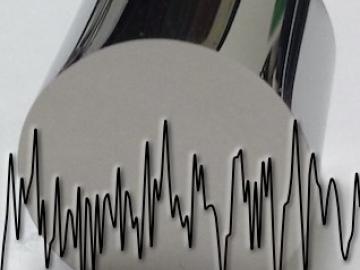Filter News
Area of Research
- (-) Neutron Science (4)
- Advanced Manufacturing (9)
- Biology and Environment (8)
- Building Technologies (1)
- Clean Energy (43)
- Computational Engineering (1)
- Computer Science (3)
- Electricity and Smart Grid (1)
- Fusion and Fission (2)
- Isotopes (2)
- Materials (4)
- Materials for Computing (8)
- Mathematics (1)
- National Security (1)
- Nuclear Science and Technology (1)
- Quantum information Science (1)
- Sensors and Controls (2)
- Supercomputing (7)
- Transportation Systems (1)
News Topics
Media Contacts

Researchers at Oak Ridge National Laboratory have developed a method of adding nanostructures to high-entropy metal alloys, or HEAs, that enhance both strength and ductility, which is the ability to deform or stretch

Researchers from NASA’s Jet Propulsion Laboratory and Oak Ridge National Laboratory successfully created amorphous ice, similar to ice in interstellar space and on icy worlds in our solar system. They documented that its disordered atomic behavior is unlike any ice on Earth.

Researchers at Oak Ridge National Laboratory’s Spallation Neutron Source have developed a diamond anvil pressure cell that will enable high-pressure science currently not possible at any other neutron source in the world.

Using neutron scattering at Oak Ridge National Laboratory, a research team captured a time-sensitive phenomenon to prove that the entropy, or randomness, of atoms in a metallic glass when exposed to intense heat is linked to how atoms self-configure versus their vibration. The large neutron flux of ORNL’s Wide Angular Range Chopper Spectrometer continuously recorded changes in the sample’s vibrations as the temperature slowly increased—a technique not possible a decade ago.




